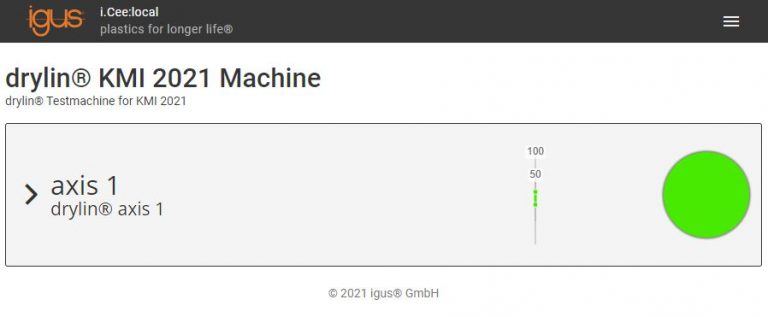Predictive maintenance: “glass ball” wizardry or real transparency and predictive information?
Richard Habering | 28. April 2021
Predictive maintenance – Preventive servicing – Preventive diagnostics … In the context of Industry 4.0, there are numerous different concepts, all of which have one claim in common: to be able to foresee future events in a plant and to communicate this in a way that is appropriate for the target group.
Today we want to take a concrete look at how we solve this at igus with i.Cee, our smart plastics range for predictive maintenance. For this we use our new smart drylin linear guide, which we presented to you last week. In summary, this intelligent linear system offers integrated wear measurement including the reporting of predictive maintenance information.
And that is exactly what is at stake now: how is this information made available to the plant operator? In principle, the answer is quite simple: namely in this dashboard:

Maintenance dashboard i.Cee:local
In this dashboard, all the information from a smart plastics system can be recorded with i.Cee. In this case, it is a drylin system that was set up for demonstration purposes at our virtual trade shows in Cologne. You are welcome to see for yourself here.
In the i.Cee dashboard, the green light shows at first glance that the linear guide is running and both carriages on axis 1 are in motion. The following information is also displayed in the maintenance overview:
- Maintenance (in days)
- Max. double strokes
- Double strokes covered
- KM initial
- KM covered

Big data thanks to in-house test laboratory & numerous online tools
The values in the columns “Double strokes covered” & “KM covered” indicate the distance already travelled by the drylin carriage. The “Max. double strokes” are interesting: here we see the maximum number of double strokes that this linear guide can achieve without any problems. igus can determine this maximum service life so precisely thanks to its years of testing experience and sophisticated service life calculators.
And it is precisely this vast pool of data from years of testing experience that is used as the basis for the output of the predictive maintenance information in the middle column. Maintenance plans can be optimised on the basis of this exact prediction of the current maintenance interval. This leads to a significant increase in overall plant efficiency.

